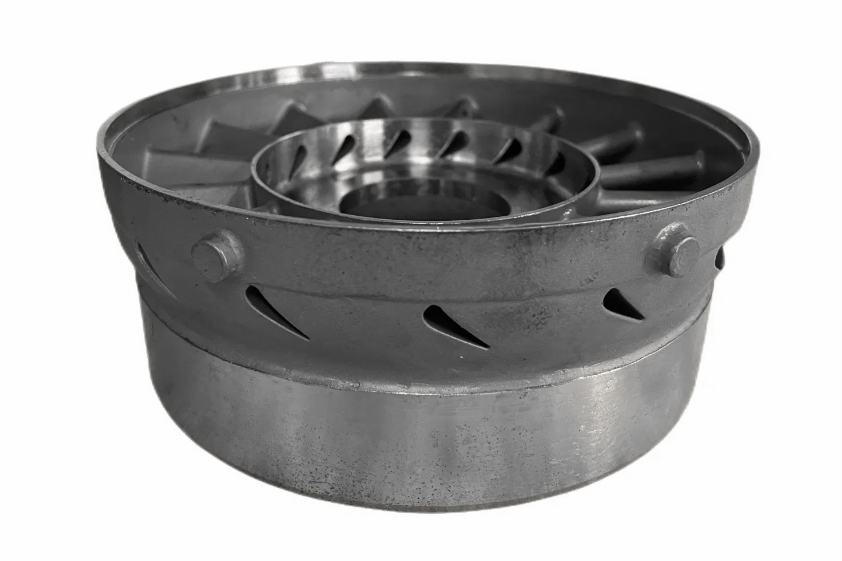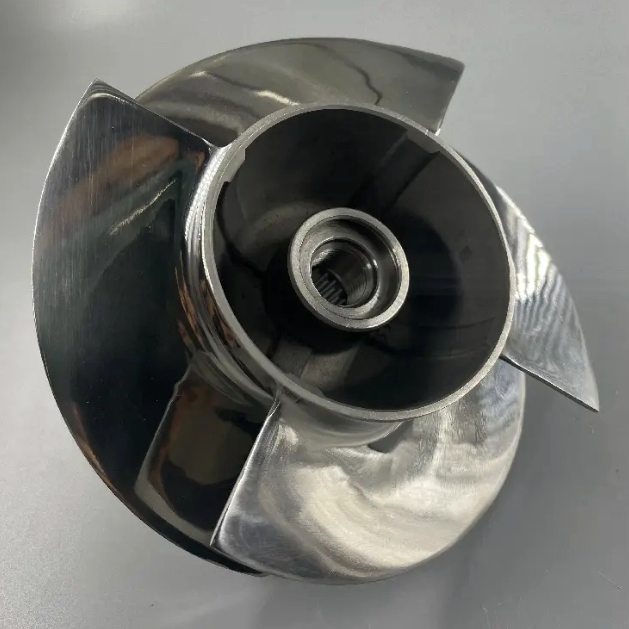Exhaust System Components: High-Temperature Alloy Solutions from Trusted Producers
Exhaust System Components: High-Temperature Alloy Solutions from Trusted Producers
Introduction
In engineering and manufacturing, exhaust system components are crucial across various industries, including automotive, aerospace, and power generation. These components are essential for the efficient operation of engines and crucial in ensuring compliance with environmental regulations. The harsh operating conditions of exhaust systems necessitate using high-temperature alloys engineered to withstand extreme temperatures and corrosive environments. This blog delves into the characteristics of exhaust system components, the high-temperature alloys used in their manufacturing, their applications, the manufacturing processes involved, rapid prototyping capabilities, typical post-processing techniques, and answers to common questions surrounding their production.
What Are Exhaust System Components?
Exhaust system components are integral parts of vehicles and machinery that facilitate the expulsion of exhaust gases generated during combustion. These components include exhaust manifolds, catalytic converters, mufflers, and pipes. Their primary functions are to direct harmful gases away from the engine, reduce noise produced by the engine operation, and help meet environmental standards by converting harmful emissions into less harmful substances.
The automotive industry's exhaust system optimizes engine performance and efficiency. Exhaustive components must endure extreme temperatures and pressures for aerospace applications, particularly in jet engines. The design and material selection for these components are critical, as they directly impact the performance and safety of the entire system.
High-Temperature Alloys Used in Exhaust System Components
High-temperature alloys are specially formulated materials that retain their strength and integrity in extreme heat and harsh environments. The need for these alloys arises from the high temperatures (often exceeding 1000°F or 540°C) exposed to exhaust components, especially in applications such as aerospace engines and high-performance vehicles.
Common Grades of High-Temperature Alloys
Inconel Alloy: Inconel, a family of austenitic nickel-chromium-based superalloys, is renowned for its high-temperature strength and oxidation resistance. Common grades include:
Inconel 600: Offers good oxidation resistance and is used in exhaust systems exposed to high temperatures.
Inconel 625: Known for its excellent weldability and high strength, it is often used in applications requiring enhanced corrosion resistance.
Inconel 718: Popular in aerospace and industrial applications due to its high strength and resistance to oxidation and carburization.
Hastelloy Alloy: Hastelloy is another group of corrosion-resistant superalloys, often used in environments where corrosion and high temperatures are a concern. Key grades include:
Hastelloy C-276: Offers outstanding resistance to pitting and stress corrosion cracking, making it ideal for severe environments.
Hastelloy X: Known for its high strength and excellent oxidation resistance at elevated temperatures.
These high-temperature alloys are essential for maintaining the performance and longevity of exhaust system components, ensuring they withstand thermal fatigue and corrosive environments.
Industry Applications of Exhaust System Components
Exhaust system components are used in various industries with specific requirements and challenges.
Automotive Industry In the automotive sector, exhaust components must reduce emissions and noise while enhancing engine performance. Advanced catalytic converters from high-temperature alloys ensure effective emission control, meeting stringent environmental regulations. Components like exhaust manifolds and mufflers are also crafted from these alloys to withstand high temperatures and provide durability.
Aerospace Industry In aerospace applications, exhaust system components are subject to extreme conditions. Jet engines, for example, operate at high temperatures and pressures, making the selection of high-performance alloys critical. Exhaust nozzles and tailpipes, crafted from materials like Inconel and Hastelloy, ensure reliable performance and safety during flight.
In the power generation industry, exhaust systems must handle flue gases from combustion. Powder Metallurgy Turbine Discs are employed in components such as gas turbine exhaust systems to ensure efficiency and compliance with emissions standards. These components must endure corrosive environments while maintaining structural integrity.
Marine and Industrial Applications Marine engines and industrial turbines also rely on high-temperature alloy components in their exhaust systems. The harsh marine environment and high operational temperatures necessitate using durable materials to ensure long-term reliability.
Manufacturing Process of Exhaust System Components
The manufacturing process for exhaust system components involves several stages, each tailored to the component's specific requirements.
Design and Engineering The process begins with design and engineering, where specifications are developed based on application requirements. Advanced software tools are used to simulate performance under various operating conditions.
Material Selection Choosing the right material is critical. Engineers evaluate factors such as temperature resistance, corrosion resistance, and mechanical properties to select the appropriate high-temperature alloy.
Fabrication Methods
Vacuum Investment Casting: This casting method provides superior surface finish and precision for intricate components like exhaust manifolds.
Single Crystal Casting: Used for components requiring exceptional thermal fatigue resistance, such as aerospace applications.
Directional Casting: Essential for components that benefit from enhanced mechanical properties.
Superalloy Precision Forging: Ideal for parts that need high strength and toughness.
· Superalloy CNC Machining achieves tight tolerances and precise component dimensions. This method is essential for parts that require a high degree of accuracy.
Rapid Prototyping Process
3D Printing for Superalloys has become a game-changer in manufacturing exhaust system components. This process allows manufacturers to create prototypes for testing and validation before full-scale production quickly.
Benefits: Rapid prototyping reduces lead times and costs associated with tooling and material waste. It allows for iterative design processes, where modifications can be made swiftly based on testing results.
Applications: Rapid prototyping is particularly valuable for developing unique designs and optimizing performance in the context of exhaust system components.
Typical Post-Process of Exhaust System Components
Post-processing is essential for enhancing the performance and durability of exhaust system components. After the initial manufacturing processes, several techniques are employed:
Hot Isostatic Pressing (HIP) HIP is used to eliminate internal porosity and enhance the density of components. This process involves applying heat and pressure simultaneously, improving mechanical properties and fatigue resistance.
Heat Treatment Heat treatment processes, such as solution treatment and aging, are crucial for achieving desired strength and hardness in high-temperature alloys.
Thermal Barrier Coating (TBC) TBCs protect components against oxidation and thermal degradation, ensuring longevity and reliability.
Superalloy Welding Used in assembly, welding is essential for joining high-performance materials while maintaining their integrity.
Material Testing and Analysis Rigorous testing ensures components meet industry standards and specifications.
Conclusion
High-temperature alloys are fundamental to manufacturing exhaust system components, ensuring they can withstand harsh environments encountered in various industries. From the automotive sector to aerospace applications, the ability to choose the right materials and manufacturing processes significantly impacts performance, safety, and compliance with regulations. As technology advances, integrating rapid prototyping and innovative manufacturing techniques will continue to enhance the efficiency and effectiveness of exhaust system component production.
FAQs
What materials are commonly used for exhaust system components?
How does the manufacturing process affect the performance of exhaust components? P
What role does rapid prototyping play in manufacturing exhaust system components?
Why is post-processing necessary for exhaust system components?
How do industry regulations impact exhaust system component design?





